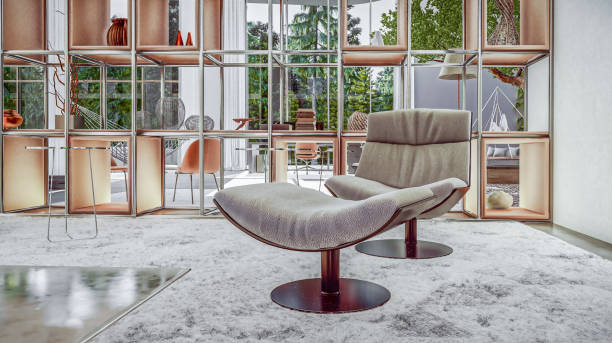Interior design is a dynamic field. Trends come and go, but some techniques are timeless, transforming spaces. The artful practice is layering rugs, which has become a popular trend in modern interior design. The days of one rug anchoring the room are over. In the 2020s, multiple rugs will coexist in harmony, creating texture and visual interest. This article explores the trend of layering carpets. We will look at their origins and the principles that make it work. You will also learn how to incorporate this trend into your home.
By layering rugs in a modern room, you can add depth and texture to an otherwise clean and sleek area. Choose rugs in solid colors or delicate patterns that complement the color scheme. Avoid over-layering.
Origins of Layering Rugs :
The idea of layering rugs has roots in many traditional styles. Layered rugs have been used by Nomadic cultures for centuries to add warmth and insulation to their homes. The contemporary design world has elevated this practice to an art form.
Interior designers started experimenting with layering of rugs to break up the monotony that comes from single rug arrangements. Designers began to realize the power of layering rugs, combining textures, patterns, and sizes. This added depth and personality to rooms. Layering rugs has become a popular and versatile technique for a variety of design aesthetics.
The principles of successful rug layering:
When layering rugs, pay attention to the size. It is important to achieve a harmonious and balanced look. Begin with a large carpet, making sure it fits the main furniture pieces of the room. Overlay a smaller rug, allowing the carpet to peek from the edge of the larger one. It creates an attractive frame around the central area.
Mixing Patterns and Textures: The opportunity to experiment with patterns and textures is one of the most exciting parts of layering rugs. Combining a neutral, solid rug with an intricately patterned rug will create a harmonious mix. The play of textures creates visual interest and makes the room more dynamic.
Maintain a Consistent Colour Palette. While you experiment with textures and patterns, it is important to maintain a constant color palette. The layered rugs will complement one another rather than compete for attention. Consistency of color creates an overall cohesive look.
Layering Rugs in Specific Areas. Layering rugs do not have to cover the entire room. It can be done selectively. Layering rugs at the bottom of a bed or under a coffee table can help create defined and cozy spaces in a large room.
Incorporating Trends in Your Space:
Let’s talk about how to incorporate this trend into your home.
Living Room Layers: To transform your living room, layer a large, Neutral Rug at the base and add a smaller rug with a pattern beneath the coffee tables. This is a great way to define the seating area and add visual interest.
Bedroom bliss: Enhance your bedroom’s aesthetic by placing a large, plush rug underneath the bed and a smaller rug in a contrasting color at the feet. This will not only improve the aesthetics of your bedroom but also provide a luxurious and soft feel beneath your feet.
Dining Drama: Add a touch of sophistication to your dining room by placing a rug beneath the table and chairs. Make sure the rug extends past the table’s edge to create a defined dining area within the room.
Conclusion:
The trend of layering rugs is more than just decoration. It’s a dynamic and thoughtful approach to interior design. You can create visually appealing environments by embracing the principles that govern size, texture, and pattern. Layering carpets is a timeless and versatile technique that can add warmth, personality, and depth to interiors. Why settle for one rug when you could create a symphony that will elevate your space? Discover the art of layering rugs and let your creativity run wild in the world of interior design.

